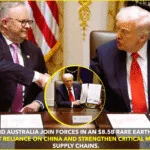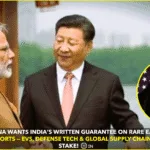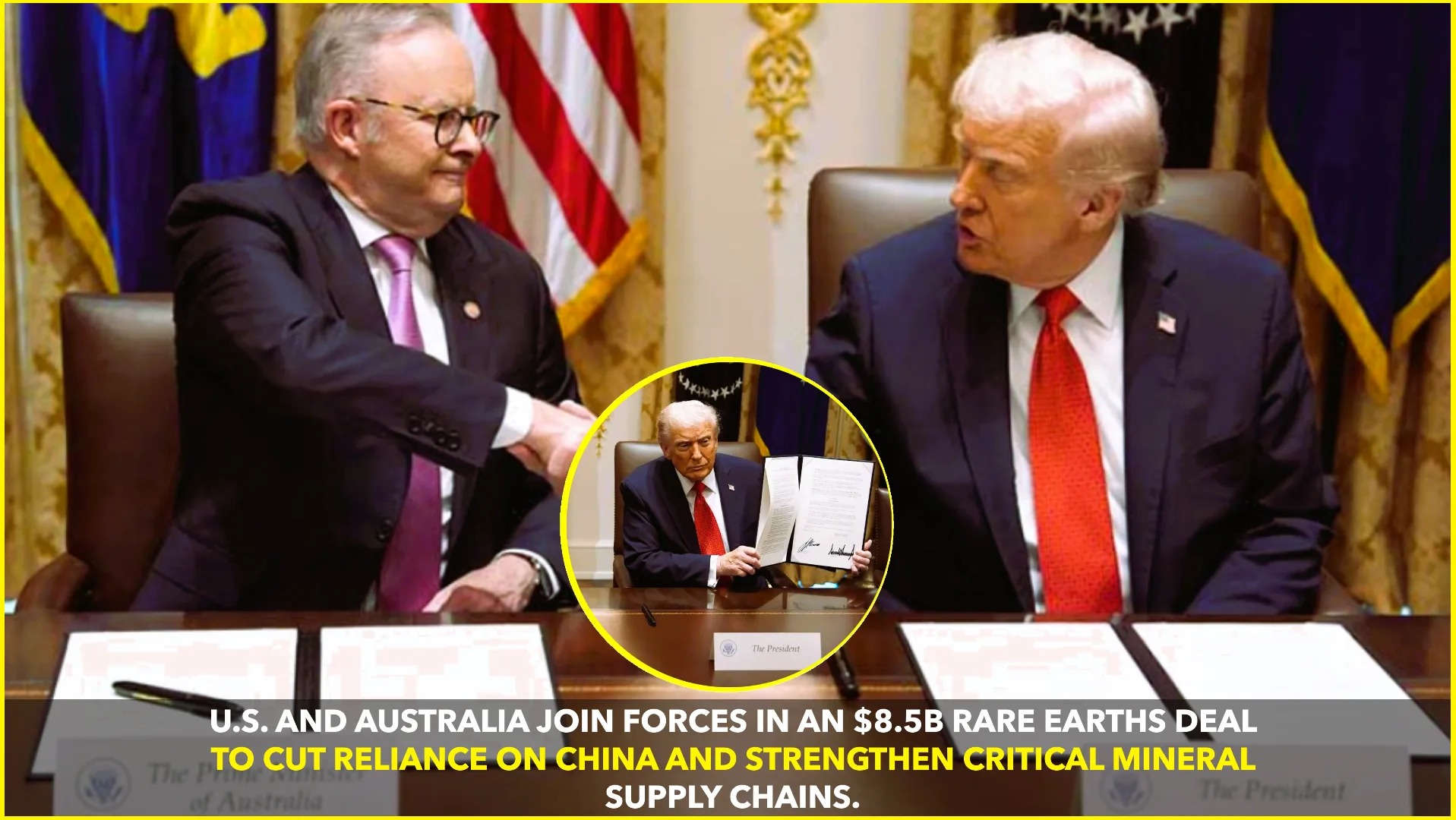In a landmark step toward reshaping global mineral supply chains, the United States and Australia have signed a $8.5 billion agreement aimed at reducing dependence on China’s dominance in rare earths and critical minerals. The deal, signed during U.S. President Donald Trump’s meeting with Australian Prime Minister Anthony Albanese, underscores growing Western efforts to secure essential materials used in clean energy, electronics, and defense systems.
According to AP News, the deal includes a mix of public and private funding, with both governments pledging to fast-track mining, processing, and refining projects across Australia and the United States. The goal is to strengthen allied supply chains and ensure access to rare earth elements like neodymium and praseodymium—key materials used in electric-vehicle motors, wind turbines, and advanced weapons systems.
Strategic Motivation Behind the Pact
China currently refines about 90 percent of the world’s rare earth elements, giving it immense influence over industries crucial to the green transition and national defense. The Reuters report on the deal highlighted that this move is part of Washington’s broader strategy to diversify sources of critical minerals, a policy reinforced under the Indo-Pacific partnership framework.
Under the agreement, Australia—home to some of the largest untapped reserves of lithium, cobalt, and rare earths—will play a central role. The partnership will enable the establishment of new extraction and processing facilities, some of which will be partially funded by the U.S. Export-Import Bank. Early project financing of around $2.2 billion has already been earmarked for development.
Key Projects and Industrial Collaboration
The Guardian reported that several Australian mining firms, including Arafura Rare Earths and Iluka Resources, are expected to benefit from the agreement. Arafura’s project in the Northern Territory will receive technical and financial backing to expand production of rare earth oxides, while Iluka is set to develop new refining infrastructure.
Beyond mining, the partnership aims to create downstream industries such as magnet production and battery materials processing, reducing the need to export raw ores to Asia. Both nations will also share technology, research, and labor-training programs to boost production efficiency and environmental sustainability.
Economic and Environmental Significance
This deal could reshape global markets for critical minerals. As Time Magazine noted, it aligns with global efforts to accelerate the clean-energy transition while ensuring national security. Rare earth elements are essential for electric vehicles, renewable-energy systems, and semiconductors—all sectors projected to grow exponentially over the next decade.
At the same time, both governments emphasized environmental safeguards. The agreement includes commitments to “responsible mining” practices that minimize waste, promote recycling, and support local communities impacted by extraction projects.
Challenges Ahead
Despite its ambitious goals, analysts caution that breaking China’s decades-long grip on the rare-earth market will take time. Infrastructure costs are high, and building new refining plants may take years. The Australian Financial Review pointed out that China’s existing scale and cost efficiency make it difficult for new entrants to compete in the short term.
Another concern is potential economic retaliation from Beijing, which has previously restricted exports of key metals like gallium and germanium. Experts believe the U.S.–Australia alliance must prepare for market disruptions and maintain steady investment to ensure long-term success.
Broader Geopolitical Context
This deal follows similar critical-mineral partnerships the U.S. has recently struck with Japan, Canada, and South Korea. However, the Australian agreement stands out due to the country’s vast resource base and its status as a trusted ally in the Indo-Pacific region. As noted by AP News, the initiative represents “a cornerstone for Western nations’ collective strategy to secure the building blocks of modern technology.”
Both leaders framed the deal as a step toward energy independence and industrial resilience. “We’re building the future together—clean energy, strong supply chains, and a free Indo-Pacific,” Prime Minister Albanese said at the signing ceremony. President Trump added that the partnership “ensures that no single country will hold the world hostage through critical resources.”
Conclusion
The $8.5 billion U.S.–Australia rare-earths deal marks a pivotal shift in global resource politics. By reducing reliance on China and investing in sustainable mining and refining, the two allies aim to secure their industrial futures while promoting cleaner technologies.
Experts believe this agreement could serve as a model for other Western economies seeking to stabilize supply chains for the next generation of technologies—from electric vehicles to quantum computing. While challenges remain, the signing signals a new era in strategic resource cooperation.










